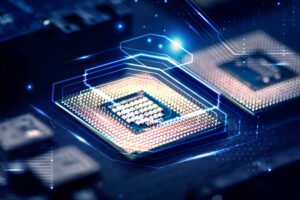Semiconductor Devices
The Building Blocks of Modern Electronics
Semiconductors are fascinating materials, but it's the devices created from them that make modern electronics possible. From the simplest diodes to the complex integrated circuits (ICs) inside your smartphone, these devices control and manipulate electrical signals. In this blog, we’ll explore the key semiconductor devices, how they work, and why they are so important in our technology-driven world.
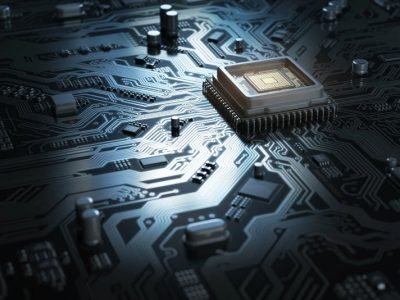
Table of Contents
Diodes: The Gatekeepers of Current
A diode is one of the simplest and most fundamental semiconductor devices. It allows current to flow in one direction only, acting as a kind of electrical valve. Diodes are widely used in circuits for rectifying AC (alternating current) into DC (direct current), protecting circuits from reverse voltage, and even in signal modulation.
How Diodes Work:
- A diode is made by joining a P-type and N-type semiconductor, forming a PN junction.
- When forward biased (positive voltage applied to the P-side), the diode allows current to flow. In reverse bias, it blocks current flow.
Types of Diodes:
- Light Emitting Diode (LED): When current flows through an LED, it emits light. LEDs are widely used for displays, indicators, and even in lighting.
- Zener Diode: Designed to allow current to flow in reverse after reaching a specific voltage, used in voltage regulation.
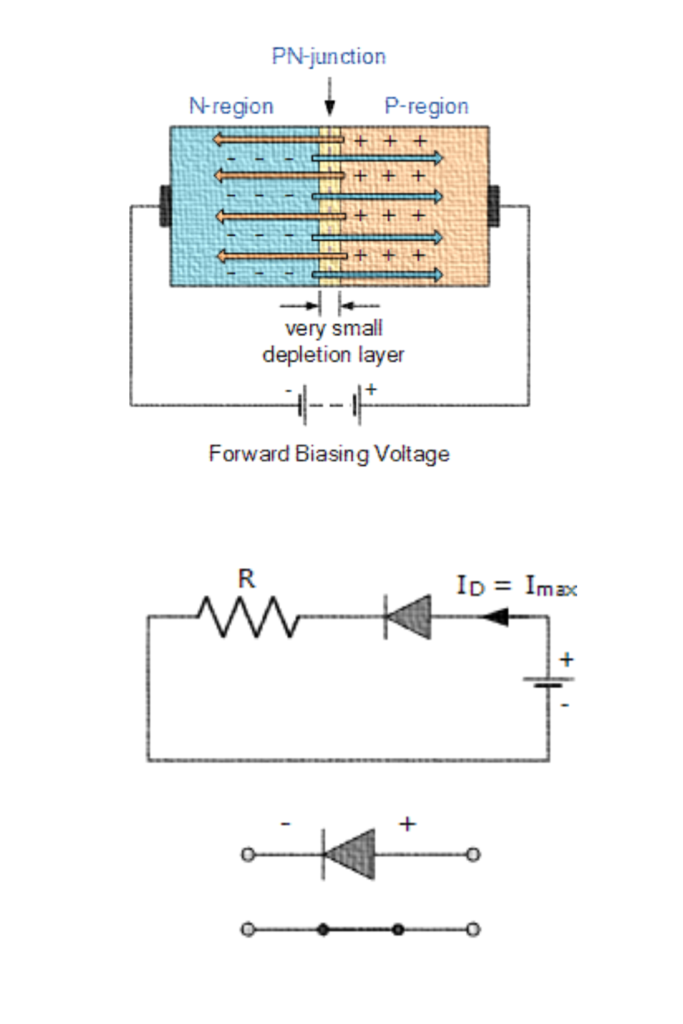
Transistors: The Workhorse of Modern Electronics
The invention of the transistor in 1947 revolutionized electronics. It is essentially an electronic switch or amplifier made from semiconductor materials, and it’s the building block for nearly all modern circuits. Without transistors, the computers, smartphones, and even the Internet as we know it wouldn’t exist.
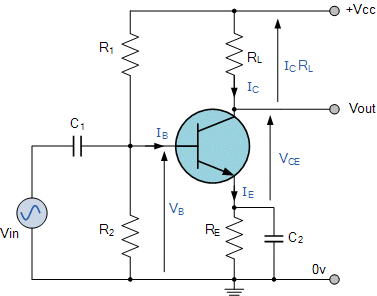
Fun Fact:
- The first-generation transistors were bulky and unreliable. Today, billions of transistors are packed into tiny microchips (less than 10 nm in size) in modern CPUs.
How Transistors Work:
- A transistor is made of a combination of N-type and P-type semiconductors. The two main types are Bipolar Junction Transistors (BJT) and Field Effect Transistors (FET).
- In a BJT, a small current applied at the base terminal can control a larger current flowing between the collector and emitter terminals.
- In a FET, an electric field controls the current flow.
Types of Transistors:
- NPN and PNP Transistors: These refer to how the N-type and P-type materials are arranged. NPN transistors are more commonly used in amplification and switching.
- MOSFET (Metal-Oxide-Semiconductor FET): MOSFETs are crucial for modern electronics because they are used in integrated circuits (ICs) for processors and memory chips.
Integrated Circuits (ICs): Miniaturized Electronic Systems
Integrated Circuits (ICs) are collections of millions or billions of transistors and other components (resistors, capacitors) embedded into a single silicon chip. This innovation allowed for the miniaturization of complex electronic systems, leading to the development of modern computers, smartphones, and almost every electronic device.
Fun Fact:
- The first ICs in the 1960s contained only a few transistors. Today, advanced chips like Intel’s or AMD’s processors pack more than 50 billion transistors onto a single piece of silicon.
How ICs Work:
- ICs are created by layering and doping silicon wafers to create an interconnected network of transistors, resistors, and capacitors.
- They can be classified as analog, digital, or mixed-signal ICs based on their function.
Types of ICs:
- Microprocessors: These are the “brains” of a computer, capable of performing millions of calculations per second. Modern microprocessors contain billions of transistors on a single chip.
- Memory ICs: These chips store data in devices like USB drives, SSDs, and RAM modules.
- Power ICs: Control and regulate power in devices, ensuring efficient energy use.
Photovoltaic Cells: Harvesting Solar Energy
One special type of semiconductor device is the photovoltaic cell, used in solar panels. Photovoltaic cells convert sunlight directly into electricity by exploiting the properties of semiconductor materials, typically silicon or gallium arsenide.
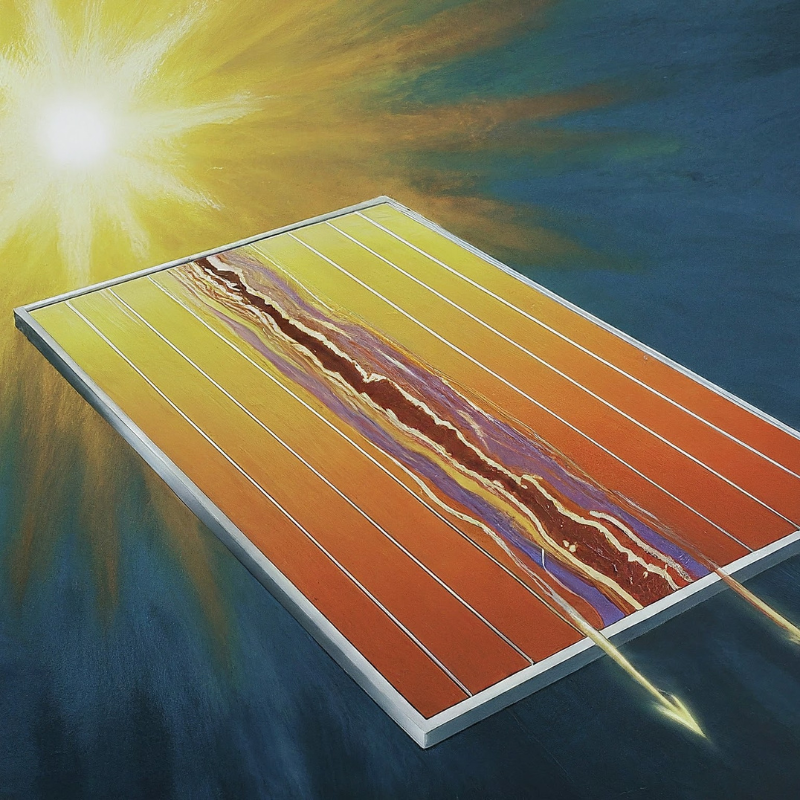
How Photovoltaic Cells Work:
- When sunlight hits the cell, it excites electrons in the semiconductor material, creating an electric current.
- The PN junction plays a crucial role, allowing the current to flow in one direction, which is then captured and converted into usable electricity.
Applications of Semiconductor Devices
Consumer Electronics:
Transistors and ICs in smartphones, laptops, gaming consoles, and home appliances.
Telecommunications:
Diodes and transistors in wireless communication devices like 5G network infrastructure.
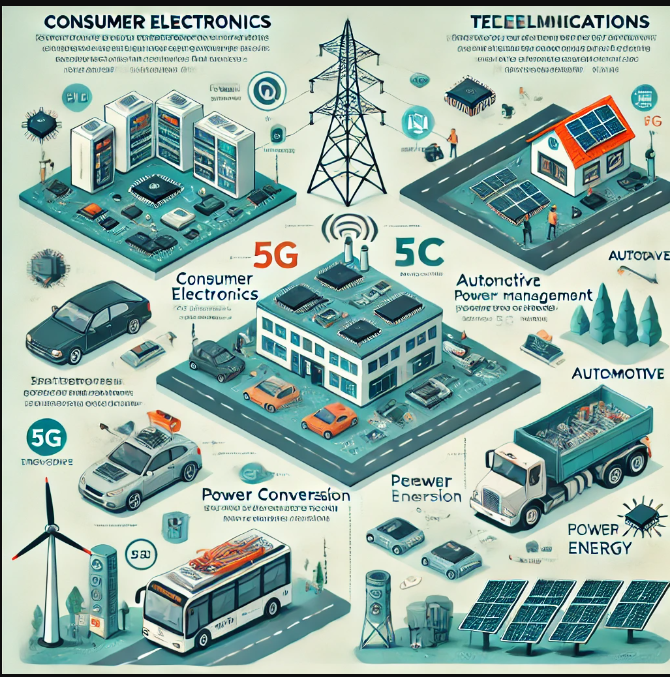
Automotive:
Semiconductor devices are essential in electric vehicles (EVs) for battery management, power conversion, and advanced driver-assistance systems (ADAS).
Renewable Energy:
Photovoltaic cells in solar panels and power ICs in wind turbines enable clean energy solutions.
Conclusion
Semiconductor devices like diodes, transistors, and integrated circuits are the building blocks of modern electronics. They control electrical signals in everything from smartphones to solar panels, making our technology-driven world possible. As technology evolves, the efficiency and capability of these devices continue to improve, driving the next wave of innovation in computing, communication, and energy.
In the next blog, we will explore semiconductor physics, delving into the underlying concepts like energy bands, charge carriers, and PN junctions that make these devices work.


